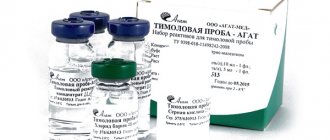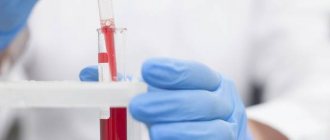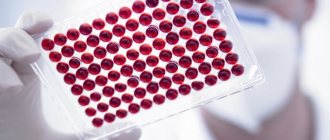Now this word is on everyone's lips. But what is the role of antibodies in protecting the body? Does an antibody test really eliminate all questions about whether you have been exposed to the virus? How accurate is it? Why might antibodies make the disease worse? Read in our analysis
Short
Antibodies are created by immune cells to fight a specific pest: virus, bacteria or parasite.
They do not appear immediately, because the body needs time to study the pest (pathogen).
The more antibodies, the stronger the protection. Over time, they may disappear, but cells are able to create them again when faced with a familiar danger.
There can be many antibody variants for one pathogen. Not everyone can “see” tests, so their accuracy is not absolute.
The virus can mutate, and then the old antibodies will not be able to recognize it. Or, having recognized it, they will not be able to neutralize it and themselves will become its conductors into the cells.
Function of immunoglobulin IgG
Immunoglobulins G deactivate viral and bacterial toxins and trigger complement-fixing reactions and phagocytosis. Due to their small molecular weight, they quickly and easily enter the extracellular space, where they perform a protective function. Immunoglobulins G are able to penetrate the placental barrier and enter the blood of the fetus from the mother's blood.
Antibodies are part of the humoral immune response; they act very specifically, since they are always directed against a specific antigen. Their purpose is to participate in immune reactions. Immunoglobulins form immune complexes with antigen molecules, activate the complement system and cause inflammatory reactions. This aims to neutralize the irritant and safely remove it from the body.
Each class of antibodies has different structural properties, so they perform specialized functions. In particular, immunoglobulin G is capable of:
- neutralize microorganisms;
- prevent relapses of diseases, for example, mumps, chickenpox, measles, rubella;
- protect the fetus.
How are antibodies related to immunity?
This is one of its main tools in the fight against threats. Antibodies are not independent cells, but protein structures that are created by protective cells (lymphocytes) for a specific target. It happens that it turns out to be completely harmless substances - for example, pollen or chicken egg whites. This is how an allergic reaction occurs. But most often, antibodies fight viruses, bacteria, parasites and other “saboteurs”.
Antibodies can also be produced against the body’s own cells—they are called autoimmune. Each cell of the body has special protein molecules - identification marks that say that it is “our own”. But if the cell has grown old, died or degenerated into a malignant one, an “order” for destruction is also sent against it.
IgG during pregnancy
Immunoglobulins are a natural component of blood plasma. They can cross the placental barrier. There are receptors for IgG on the surface of the trophoblast; they combine and transfer immunoglobulins from the mother’s blood directly into the fetal blood. Thus, this mechanism becomes a passive defense of the child against infections. The fetus's immune system has not yet formed, so maternal antibodies come to the fore. When the mother's antibodies are lacking, doctors prescribe intravenous immunoglobulin G.
Why are antibodies not immediately formed during illness?
To create the right antibody, the immune system first needs to study the offender. To achieve this, different “departments” cooperate in the body. First, interceptor cells (macrophages) absorb and digest foreign particles. Then they are introduced to their structure of “laboratory” cells (B-lymphocytes). They, in turn, form many copies of themselves with different variants. The “memory” of immunity is not based on antibodies alone. Cells also have it. Lymphocytes that produce antibodies remain dormant until they encounter the pest again. At the right moment, they can quickly create new “shells”. True, such preparation also has a downside, which prevents the creation of effective vaccines against some viruses.
When faced with a familiar virus, the body first throws into battle the cells that were trained to attack it. He suspends the development of new antibodies to save energy. But the virus can mutate in such a way that its vulnerabilities are protected, and the immune system does not recognize this. Even worse: the virus can use the antibody attached to it to enter an immune cell and infect it.
Indications for IgG testing
Indications for immunoglobulin G testing:
- assessment of local immunity and speed of reaction to antigens;
- diagnosis of immunodeficiency conditions and determination of their severity;
- elucidation of the causes of frequent inflammatory, infectious and chronic pathologies;
- assessment of the functioning of the immune system in the diagnosis of autoimmune diseases;
- determination of blood composition in hematological diseases;
- screening for oncological processes;
- assessment of the effectiveness of treatment with immunoglobulin replacement drugs;
- monitoring the course of myeloma during treatment.
How is an antibody test done?
To detect antibodies, tests use antigens - areas on the surface of the virus to which these same antibodies bind. They are fixed in the wells of special tablets, or dies, and the patient’s blood is added to the wells. Staining then reveals the antibodies that would have attached to the antigens. If the sample changes color, this should mean that antibodies are present.
Rapid antibody tests are typically used to provide a simple yes/no result. They have two lines, like a pregnancy test. There are also those who look separately for proteins of classes M (which are formed during illness) and G (which remain in the blood after recovery). In this case, there are already three stripes in the test.
There are also quantitative tests. They already make it possible to determine not only the presence of antibodies, but also their concentration. It can be used to judge both the state of the immune system and the stage of the infectious process: is it in an acute form or is it heading towards recovery. To conduct quantitative tests, developers build on the established antibody norm, which corresponds to different stages.
Normal value for immunoglobulin G
The norm of immunoglobulin G for newborns is 3.97–17.65 g/l. This indicator is due to the fact that the body of a child who has just been born still uses antibodies received from the mother.
In the first year of a child’s life, he begins to produce his own antibodies. At this age, the normal immunoglobulin level for boys is 3.97–17.65 g/l, and for girls – 3.91–17.37 g/l. Norm up to two years: for boys – 4.75–12.1 g/l, for girls – 4.88–12.26 g/l.
Then the amount of immunoglobulins in the blood reaches the same level as in adults. For boys and men, the norm is 5.4-18-22 g/l, for girls and women - 5.52-16.31 g/l.
That is, antibodies destroy viruses and bacteria?
Not really. The purpose of antibodies is to neutralize the “intruder” so that it cannot reproduce, or to mark it for destruction. For example, they stick to viral particles, preventing them from entering the cell. Since the virus is unable to reproduce outside cells, it dies. Antibodies can also clump bacteria together into clumps, which are then devoured by phagocytes, or activate a system of immune proteins that will break through the bacterial membrane and kill it.
An antibody works like a molecular master key: it is born already tailored to a certain structural feature of a foreign body. For example, this could be a site (spike) on the surface of a viral particle through which it binds to a cell. The antibody blocks the spike and the virus cannot infect the cell. Related viruses may have similar structural elements, and then antibodies to one member of the family will be effective against another. For example, some people who have had SARS in the past (caused by the SARS-CoV-1 virus) already have effective antibodies against its relative, SARS-CoV-2, which causes COVID-19 infection.
What can affect immunoglobulin G?
It is important to know that during intense muscle loads, as well as psychological stress, the level of immunoglobulin G can physiologically increase. In addition, immunization in the last 6 months or taking medications may increase the level.
Agents that increase the concentration of immunoglobulin G:
- valproic acid;
- carbamazepine;
- phenytoin;
- chlorpromazine;
- penicillamine;
- dextran;
- oral contraceptives;
- methylprednisolone;
- gold preparations;
- estrogens.
The level of immunoglobulin G can be reduced by:
- burns received;
- radiation exposure;
- taking cytostatics and immunosuppressants;
- intestinal pathologies that are accompanied by protein loss, for example, ulcerative colitis, Crohn's disease;
- renal failure, nephrotic syndrome.
How to choose a quality antibody test?
Look at the sensitivity and specificity rates. Sensitivity is the agreement between positive test results and actual diagnoses. Specificity is the ability of a test to detect exactly those antibodies that relate to a specific pathogen. A test that is not sensitive enough may miss some cases, while a test that is not specific enough may suspect the virus in those who do not have it.
According to the results of a recent meta-analysis, the ELISA test, an enzyme-linked immunosorbent test, turned out to be the most reliable in determining antibodies to SARS-CoV-2. Its specificity is 99% and sensitivity is 90–94%. It is done in a laboratory and takes one to two days. The ICA (immunochromatographic) rapid test is less accurate, but it takes about ten minutes. Sensitivity/specificity may be different for different types of antibodies.
It is important to remember that the antibody test does not show the presence of the virus, but only the body’s possible reaction to it. The WHO (World Health Organization) considers the PCR test to be the most accurate and reliable method for diagnosing a viral infection. It allows you to detect the presence of genetic material of the virus in the blood. Remember that in making a final diagnosis, it is not the test that is decisive, but the clinical picture.
IgG is elevated
An increase in the level of immunoglobulin G indicates that an acute or chronic infectious process is beginning in the human body. Immunoglobulins may increase in the following cases:
- whooping cough;
- diphtheria;
- scarlet fever;
- measles;
- rubella;
- chicken pox;
- tuberculosis;
- mononucleosis;
- hepatitis;
- cirrhosis of the liver;
- lupus erythematosus;
- rheumatic fever;
- rheumatoid arthritis;
- helminthic infestations;
- acute and chronic pathologies of the pulmonary, urogenital and intestinal systems;
- recovery period after an infection;
- sarcoidosis;
- cystic fibrosis;
- Waldenström's disease;
- chronic lymphocytic leukemia;
- multiple sclerosis;
- syphilitic damage to the brain or spinal cord;
- severe allergies;
- AIDS, HIV;
- development of oncology.
Indications for research
Frequent indications for immunoglobulin analysis are recurrent and chronic infectious diseases. The study is prescribed for patients with bacterial damage to the respiratory tract - sinusitis, pneumonia, tonsillitis. Also, suspicion of reduced activity of humoral immunity arises with prolonged and frequently recurring otitis, with meningitis, with symptoms of gastrointestinal infections. Immunoglobulin M is used to detect intrauterine infections. In addition, a blood test for immunoglobulins is performed for tumor diseases of the lymphoid system - myeloma, leukemia, lymphoma, reticulosarcoma, as well as for autoimmune diseases and liver pathologies.
The advantage of the analysis is its high information content - the results reflect several parts of the humoral immune response at once: the body’s ability to quickly recognize a foreign agent, the formation of antigenic “memory”, and the activity of protecting the mucous membranes. Sometimes some decrease in indicators is transient and reversible. To differentiate such a deviation from a truly existing violation of the body's anti-infective defense, this study is prescribed together with a test for CEC and phenotyping of lymphocytes.
Preparation for analysis and collection of material
Immunoglobulins are determined in venous blood; sampling is recommended to be done in the morning, before meals. If the procedure is scheduled for another time, then at least 4 hours should pass after eating. The day before the test, you need to avoid alcohol, cancel sports training and other types of intense exercise. 3 hours before donating blood, you must refrain from smoking; the last 30 minutes should be spent in a calm environment. Some medications change the level of immunoglobulins in the blood, so you should tell your doctor about all medications you use. Blood is taken from the cubital vein, stored and transported in tubes with an anticoagulant.
The level of immunoglobulins is examined in the blood serum. Before the analysis procedure, the tubes are placed in a centrifuge, and then clotting factors are removed from the separated plasma. A common research method is immunoturbidimetry. Its essence lies in the fact that antigens are introduced into the serum, which form complexes with immunoglobulins. The density of the test sample increases, which is measured using a photometer; based on the obtained indicators, the level of immunoglobulins is calculated.
Reduced IgG
Since immunoglobulins G are able to penetrate the placental barrier, their level often drops in a pregnant woman, resulting in infectious processes.
Also, IgG levels may decrease in the following cases:
- tumors of the lymphatic system;
- variable immunodeficiency;
- agammaglobulinemia;
- transcobalamin deficiency;
- chronic viral infection;
- Louis-Bar syndrome;
- Wiskott-Aldrich syndrome;
- inflammatory pathologies of the large intestine;
- nephrotic syndrome;
- congenital muscular dystrophy;
- poisoning from coal or oil processing waste;
- long-term treatment with immunosuppressants;
- dermatitis, burns and other diseases that are associated with the body’s loss of protein;
- irradiation;
- splenectomy.
Low immunoglobulin in newborns in the first year of life is physiological and is considered normal.
Should you always trust test results?
The result largely depends on the set of antigens that the developers used. If the selected antigens are not specific enough, proteins produced in response to other pathogens, such as related coronaviruses that cause the common cold, will latch on to them. In this case, the test gives a false positive result.
There are also false negative results - when a person has antibodies to an antigen that is not presented in the test. For example, this happens with viruses that have been discovered recently, as in the case of SARS-CoV-2. A false negative result can also occur when the blood was taken too early and there are not enough antibodies in it yet.
IgM antibodies
Their concentration increases soon after the disease. IgM antibodies are detected as early as 5 days after onset and reach a peak between one and four weeks, then decline to diagnostically insignificant levels over several months, even without treatment. However, for a complete diagnosis, determining only class M antibodies is not enough: the absence of this class of antibodies does not indicate the absence of the disease. There is no acute form of the disease, but it may be chronic.
IgM antibodies are of great importance in the diagnosis of hepatitis A and childhood infections (rubella, whooping cough, chickenpox), easily transmitted by airborne droplets, since it is important to identify the disease as early as possible and isolate the sick person.








